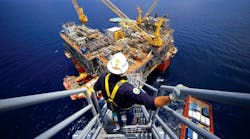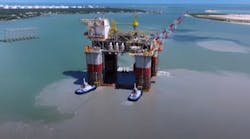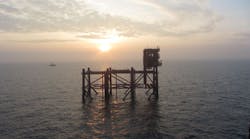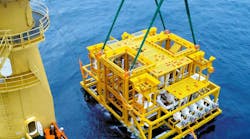An apparent shift in thinking is emerging among states from that of maximizing resource revenues to maximizing the use of the resource revenue stream for the benefit of the local economy and to attract foreign investment. A recent report by Wood Mackenzie suggests that, beginning this year, resource nationalism may give way to resource maximization. Governments are reassessing the need for foreign investment in technology, capital, and expertise. Some states may opt to ease their hard line stance on resource nationalism, while other states are seeking to solidify their process of managing petroleum revenue. One example of the latter is Ghana.
Global interest in Ghana's upstream sector was triggered by the Mahogany-1 discovery in 2007, which culminated with first production from Jubilee in 2010. Its emerging petroleum industry is attracting an increasing share - from $860 million in 2010 to $1.67 billion in 2011 - of regional commodity related foreign direct investments. Increasing oil revenues also helped boost its GDP growth rate to nearly 14% in 2011. Additional phases of Jubilee and subsequent production from TEN (Tweneboa, Enyenra, and Ntomme) should help sustain production and associated revenue for the foreseeable future.
Ghana is seeking to solidify its requisite policies and institutional structures for effective management and oversight of the petroleum sector. One key challenge for the country, according to a recent report by the African Development Bank (ADB), is its preparedness to handle the environmental issues of the sector including the capacity to monitor the environmental impacts of oil production.
The ADB has outlined some of Ghana's key initiatives. In 2010, Ghana achieved Extractive Industry Transparency Initiative (EITI) compliant status and extended the initiative to include the oil and gas sectors. Between 2010 and 2011, Ghana passed several laws governing the management of oil revenues to ensure transparency and accountability. Key bills passed include the Petroleum Revenue Management Act (PRMA) and the Petroleum Commission Bills. To meet provisions of the PRMA, the Environmental and Natural Resources Advisory Council (ENRAC), chaired by the vice president, was created.
Established in 2011 by the Petroleum Commission Act, Act 821, and in accordance with Article 269 of the 1992 Constitution of Ghana, the Petroleum Commission, Ghana (the Commission) was established to regulate the upstream sector of the Ghanaian petroleum industry.
The Commission took over regulation of the sector from the Minister of Energy, who hitherto regulated the sector with the assistance of Ghana National Petroleum Corporation (GNPC). Indeed, Act 821 specifically requires GNPC to cease to exercise any advisory function in relation to the regulation and management of the utilization of petroleum resources and the coordination of policies in relation to them six months after the passage of Act 821. This took effect on Jan. 16, 2012.
Establishing the regulatory framework for resource management is a process andJuliette Twumasi‐Anokye, legal advisor, Petroleum Commission of Ghana, will elaborate on the government's current activities with respect to local content development at the 17th annual Offshore West Africa Conference & Exhibition (OWA), March 19-21, 2013, International Conference Center, Accra, Ghana. The Commission also will discuss the development of a Common Qualification System aimed at ensuring all companies operating in the upstream sector are registered with the Commission, setting minimum standards for local content plans, evaluation of contracting strategy, and tender pre-qualification.
New legislation to address local content and participation is expected to be presented to Parliament shortly for deliberation and enactment.
Subsea boosting and processing trends
Currently, subsea processing projects can be found in nearly every major offshore oil and gas region in the world, while most of the activity to date is the North Sea and offshore Brazil (Campos and Espirito Santo basins). Still an emerging market, with the number of installed systems relatively small (about 30), recognition of the potential returns and hence the level of acceptance of subsea processing technologies continues to increase, explains the authors of a report inside this issue on the outlook of subsea boosting and processing systems. The full report begins onpage 64, and is accompanied by the 2013 Worldwide Survey of Subsea Processing Systems poster, which includes a new section on subsea power transmission.
To respond to articles in Offshore, or to offer articles for publication, contact the editor by email([email protected]).
Offshore Articles Archives
View Oil and Gas Articles on PennEnergy.com






